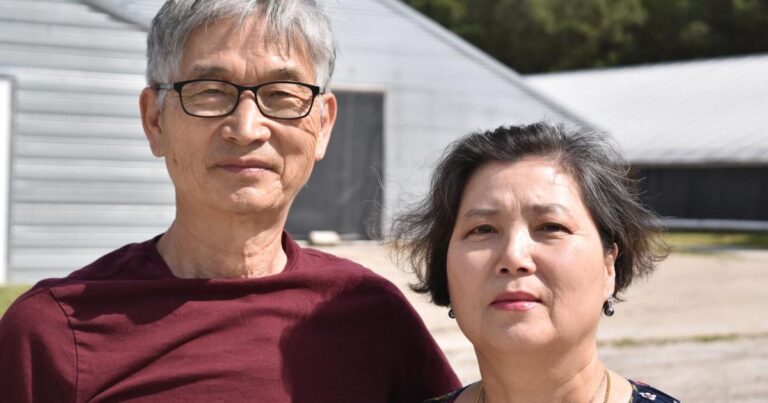
In a recent Bay Journal commentary imagining Delmarva without the thriving chicken community it now has, Brad Johnson makes a common but flawed assumption — that the growth of the average chicken farm has displaced the family farmer. “Family farms are largely gone,” he writes, “replaced by chicken house CAFOs (concentrated animal feeding operations).”
In truth, though, family farms today are still the backbone of the chicken industry on Delmarva. That’s how it’s been since, as Mr. Johnson recalls, Cecile Steele of Ocean View, DE, inadvertently started the broiler industry in 1923 when she received 10 times more mail-order chickens than she expected.
Each year, the Delmarva Chicken Association honors outstanding chicken growers. My job is to interview them and tell their stories. To do so, I pull up to their front doors, sit at their kitchen tables and have a chat. Out the back doors, across the yards, I see their chicken houses, where tens of thousands of birds are being raised by the families who live there; parents and kids pitch in together.
In the house, as they discuss their passion for animals and the investments they’ve made in their operations, kids wander through to grab after-school snacks. Dogs nose in for a nuzzle. An alert on a grower’s phone means she’ll pause the interview to adjust a networked controller in the chicken house or step outside to have a look at her flock.
These farms are two things at once: homesteads and independent businesses, where tens of thousands of birds at a time are raised to market age. To outsiders, it may be that an all-encompassing acronym CAFO. But these lands remain true-blue farms, proudly run by farm families.
Eun Young Yu is one of the more than 1,300 family farmers raising chickens on Delmarva today, and her family’s story is emblematic. The four-chicken-house farm in Laurel, DE, that she and her husband, Wan Ki Yu, manage together is perfectly average in size — and, yes, much bigger and more complicated than the picket-fence farm illustrated in children’s books. As contractors with Mountaire Farms, they raise more than half a million chickens every year — again, average production for a chicken farmer today. Looked at in a certain light, their farm is a complex enterprise, not a romanticized small farm.
But the Yu farm is, without question, a family farm through and through. The Yus are first-generation immigrants from South Korea whose American journey brought them first to Philadelphia in the late 1990s, where they owned a corner store. The city life wasn’t what they wanted for themselves or their children, so in 2003 they moved to Delmarva and bought the farm they own today. Here they found a way of life and contentment that their city life had not offered.
There are more than 200 farms on Delmarva whose principal producers are Asian, according to the U.S. Department of Agriculture, and the Yus became part of a network of Korean-speaking chicken growers who help each other. Their chicken houses are a hundred steps, if that, from their back door. In between the chicken houses and an array of solar panels, the Yus grow cabbage and other vegetables for their own cooking. “The city life, every second is stress and tension. Here, it’s relaxed enough for us,” Eun Young told me this spring when I interviewed the couple for their Outstanding Grower honor.
It’s crucial to understand that the success the Yus found is intrinsically tied to their farm’s big-enough-to-make-sense size. Operating one small chicken house, instead of four modern-size ones, would not generate enough income to invest in solar power, tree buffers, heavy-use pads or other features they can point to that make their farm more sustainable.
Today’s chicken growers know in their bones that modern farmers — and those who consume what farmers grow and raise — benefit from economies of scale. Today it takes 58% less water and 72% less land to raise 100 pounds of chicken than it did to raise those 100 pounds in 1965. That would not be possible if the technologies and standards of chicken farming had not advanced since 1965 to what they are today.
In his indictment of the industry, Mr. Johnson retells the story of Cecile Steele’s 1923 foundational flock of 500 chicks. They had come to her by mistake — she had ordered only 50. But she went ahead and raised the whole lot and, to her surprise, sold them for a handsome profit to hotels and restaurants.
But he leaves out the next decision Steele made in her new role as a chicken grower: to get even bigger. Within three years, the Steele family had built a farm large enough to raise 10,000 birds at a time. Was that becoming “big chicken,” or was it an inspirational family farm success story? There are 1,300 Delmarva families who will tell you it’s the latter.
James Fisher is a spokesman for the Delmarva Chicken Association.
The views expressed by opinion columnists are not necessarily those of the Bay Journal.
